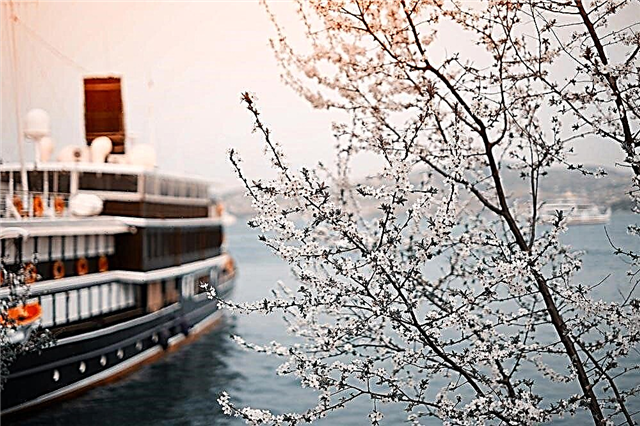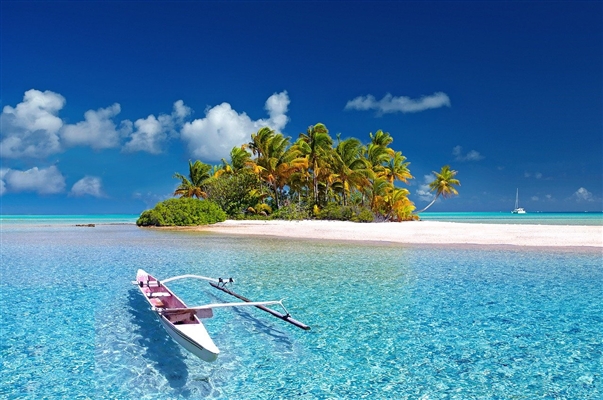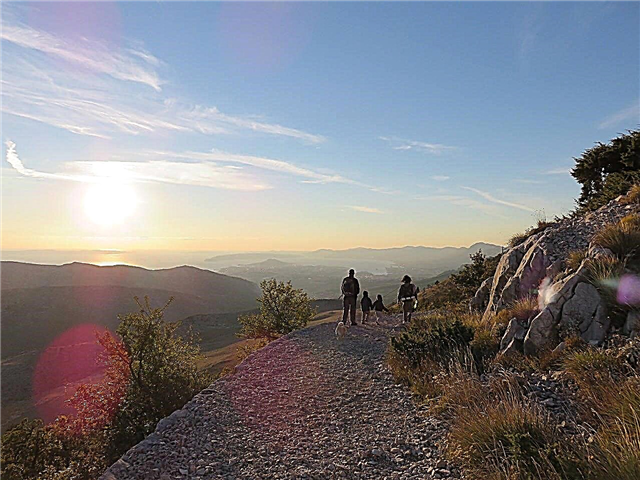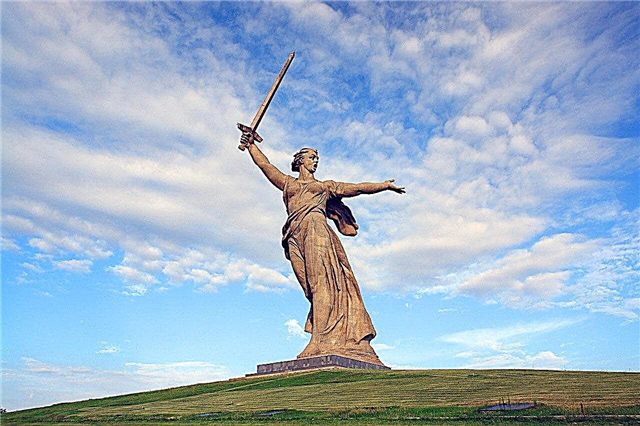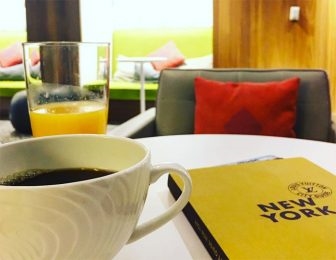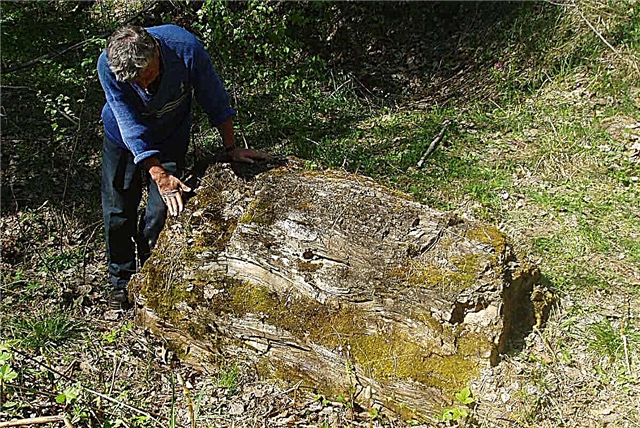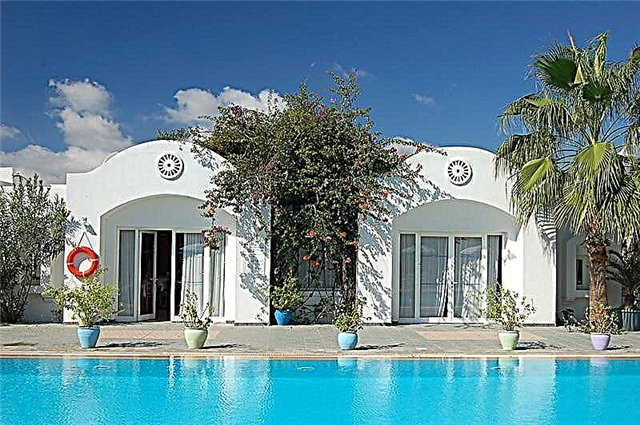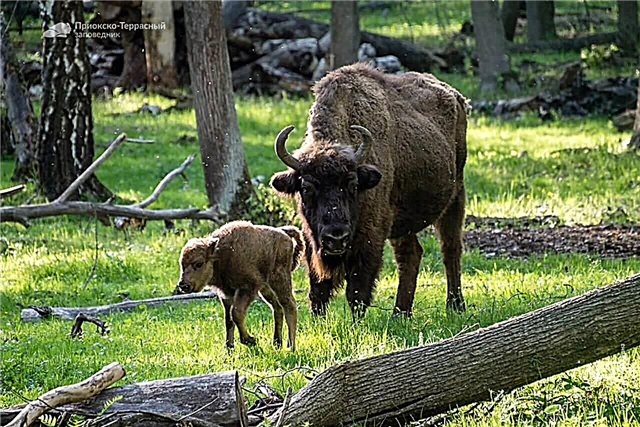The Moscow region is rarely viewed by tourists in the context of natural beauty, but in vain. There is, among other things, one biosphere reserve and two national parks. Their employees not only try to preserve distinctive ecosystems, but also carry out active educational activities. Especially extensive program in Losiny Ostrov, where you can not only visit the biological station, but also take part in interesting events.
There are many natural monuments and reserves in the region. These are picturesque places with their own nuances. Most of the species are from the Red Book, while access to them is not limited, which means that every traveler can examine in detail the swamps, tracts, forests, ancient settlements and other objects. The main thing is not to forget about the rules of conduct in protected and protected areas.
Nature reserves and national parks of the Moscow region
The nature of the Moscow region - a photo with the names and a brief description of the protected areas. List of popular PAs of federal and regional significance!
Prioksko-Terrasny Reserve
The territory of 5 thousand hectares was declared a nature reserve in 1945. Environmental education is considered important among the goals, so tourists are welcome. When visiting, you need to familiarize yourself with the code of conduct. In the Museum of Nature, guides tell about the history of the reserve. There is a bison nursery, grown-up individuals are often sent from here to other areas, where new herds are created.

Elk Island National Park
Founded in 1983, making it one of the first national parks in the country. The area is over 11.5 thousand hectares. Notable objects: an elk biological station, an arboretum, a birdwatching tower, the Russian Life Museum, Alekseevskaya Grove, where bicentennial lindens and pines grow, Korzhevsky plantations near Korolev - a landscape created by hand, etc. Folklore events and themed teas are held.

Zavidovo
It has existed since 1972 on an area of 125 thousand hectares. The presidential residence "Rus" is part of the national park. Due to the fact that there are many small settlements here and people live on a permanent basis, the restrictions on the use of natural resources are less strict, but activities that are critical for nature are prohibited. The common territory is divided into typical zones with different degrees of protection.

Lake Kiev and its basin
The complex nature monument is located in Lobnya. The area is almost 25.5 hectares. The main species, the protection of which we took care of when creating a special zone, is black-headed gulls. They were threatened when they closed a nearby dump: the birds are used to eating there, but they have forgotten how to fish. To survive, part of the colony migrated. Floating islands can be seen on the lake, and the shores are often heavily overgrown.

Natural monuments of the Moscow region
Picturesque natural objects - rivers, lakes, springs, swamps, geological landscapes and forests!
Serednikovo park
The year of obtaining the current status is 1966. Refers to the territory of the Solnechnogorsk region. The park was created in the late 18th and early 19th centuries. It is also considered an architectural monument. A unique example of landscape art for the Moscow region. Since this place has always been prestigious in terms of recreation and even treatment, it was often visited by prominent figures such as Lenin or Chaliapin.

The source of the Moskva River
Located on the border with the Smolensk region. The river originates in the Starkov bog. There was a lot of controversy on this topic, but, in the end, the area was recognized as a natural monument and not only a signpost, but also the "Picturesque Spring" chapel was erected here. Inside there are small fountains into which water flows from an artesian well. A small bridge nearby attracts newlyweds: they leave locks with names on the railing.

Lake Biserovo
The natural monument has an area of 40 hectares and an average depth of about 2.5 meters. The name appeared after Catherine the Great lost her beadwork here while walking. A popular place with fishermen: there are about 15 species of fish. People also come here to improve their health with sapropel mud or to be in the bosom of nature. There are many comfortable camping sites along the coast.

Pushchino estate on the Oka
The first mentions date back to the 16th century. After the abolition of serfdom, another owner changed, who decided to renew the property and add annexes and details of the then fashionable neoclassicism style. This is how the stucco molding on the facade and the portico with six columns appeared. For some time a hospital was based in the estate. Although it has the status of a cultural heritage site, it is in desolation and may collapse completely.

Seven Keys
This natural monument can be found in the Naro-Fominsk region. Different spring streams join in the river, which is why small waterfalls flow down the slopes. The most notable of them is Rainbow. It is formed by two springs, the source of which resembles a heart in shape. Above, there is a dam formed by another source. In winter, the water does not freeze completely here, and steam is often visible over the surroundings.

Lohin Island
It was formed between the channel and the oxbow of the Moskva River. Area - 430 hectares. The island is accessible via a special bridge for pedestrians and cyclists. Landscapes and vegetation are striking in their diversity, given their modest size: oak groves of elms and lindens, pine forest, white moss is found. Sight - Deaf hole - lake, which is about 12 thousand years old. Became a natural monument in 1986.

Lakes Nerskoe, Dolgoe, Krugloye and their immediate surroundings
The reservoirs were combined into a natural monument in 2016. Until this moment, the territory belonged to the reserve. The total area exceeds 1.2 thousand hectares. The lakes are of glacial origin. They are surrounded by swampy depressions. Nerskoe is considered one of the most beautiful in the Moscow region, Dolgoe is distinguished by especially clean water, Meshcherikha flows from Krugloye. Unique ecosystems include over 30 rare species of flora and fauna.

Zvenigorod settlement
In the past, this natural monument was a fortification. Its earthen ramparts were 8 meters high and 800 meters long. It was built in the XII century and was repeatedly built on until it lost its protective value. There are several springs on the territory, including the “Fountain of Youth” and “Fountain of Old Age”. On the slopes of ravines and ramparts, pine trees grow, which are more than 150 years old.

Stratotype of the Gzhel Stage
This is where rocks emerge. Located near the Gzhel station. For the uninitiated into geological subtleties, a natural monument looks like an outcrop of limestone. On an area of 15 hectares, you can find ancient fossils and unusual stones: single corals, bryozoans, brachiopods, ammonites. To prevent shedding of the stratotype wall, a dog rose was planted on it at the turn of the 80s-90s of the last century.

Dendrological park "Volkhonka"
It was founded in 1930 in the Noginsk region as a training base at a garden and decorative technical school. It was abandoned and fell into disrepair. Recognized as a natural monument in 1986. The area is less than 7 hectares. There are more than 120 rare representatives of flora here, they are under special protection. The entire unique ecosystem also attracts attention: parks of the past have taken root and are adjacent to wild vegetation.

Kolchikha Key Swamp
Located in the Krasnogorsk region. It is recognized as a natural monument, including because of the samples of rare flora. At the moment, only one third of the total area remains unchanged. The rest is filled up and built up with summer cottages. The swamp grows slowly, which is due to the cold spring waters, which are hardly absorbed. For the same reason, there is high humidity here, which made it possible to form a special ecosystem.

Lake Alpatovo and its basin
It has existed as a natural monument since 1986. Located on the territory of Lotoshinsky district. The total area is just over 120 hectares. The area of the lake is 20 hectares, the average depth is about 3.5 meters. Around - a swamp and pine woodlands. It is possible to pitch tents only on the southern shore, the other sides of the lake are in thickets or swampy. Locals and tourists alike come here to buy cranberries and to hunt ducks.

Basin of Lake Mikhalevskoe
It was declared a natural monument in 2007. Refers to the Mozhaisky District. The area of the protected area is 156 hectares. It is a wetland complex and is the only natural body of water through which the Moskva River flows. The northeastern coast is heavily swampy. There is a "fishing trail", but it does not allow you to go all over the lake and ends in front of a wall of reeds.

Ugornaya oak grove Ulitinskaya
Broad-leaved forest on the left bank of the Moskva River near the village of the same name. The area is 15.5 hectares, in 2014 the boundaries of the protected area were revised. It became a natural monument in 1987, while it is completely in private ownership. Local ecosystems in general are considered valuable. There are plants that are rare for the region, including varieties of bluebells.

Borovsky kurgan
Disputes about the origin of the natural monument do not subside: it is either a mass grave of soldiers, or an ancient settlement. From here began the march-maneuver of the Russian troops under the command of Kutuzov in 1812. You can walk along the ramparts of the mound in the summer, examining the area from a height, but this area is especially popular with tourists in winter, as a ski resort begins its work. Descent from a 65-meter slope is a rarity for the Moscow region.

Natural reserves of the Moscow region
Places of special protection for certain species of plants and animals or other individual objects
Crane homeland
The reserve was established in 1979 on an area of at least 11 thousand hectares. It is located in the northeast of the region. A key ornithological territory of the country. Named after the work of Prishvin. Became a venue for scientific conferences, folklore events. There are not many excursions, they differ depending on the month, the recording is carried out in advance. Soon it is planned to create a national park here.

A thundering waterfall on the Wendige River
Located on the left bank. It is formed from several keys that join together and fall from a height of about 25 m. Part of the nature reserve has been ennobled: a beautiful and solid wooden staircase has been built, fonts have been built, and there is a chapel. Each of the sources in the district is assigned a unique property. Supposedly, one helps with a sick heart, the other heals joints and so on.

Zvenigorod biological station of Moscow State University and Sima quarry
The reserve was created in the Odintsovo district in 1981. The area is about 1.3 thousand hectares. Specially protected species include not only plants and animals, but also insects, including one of the largest colonies of red ants in the region. The local nature must be treated with care, as even a simple walk along the raft can harm the ecosystem. A special regime is also valid in the buffer zone.

Teryaevskie ponds
The status of the reserve was obtained in 1981. The area of about 40 hectares includes two artificial ponds and a wetland area around. The Joseph and Guryev ponds were dug in the 16th century and named after the monk and abbot of the local monastery. The ecosystem is also valuable because the wild flora and fauna have adapted to being close to people. Nearby attraction is Teryaevskoe settlement, which has become an archaeological monument.

Dubrovitsky forest
It has existed in its current status since 2017. Has a complex profile. Located in the Podolsk region on an area of 561 hectares. Especially valuable are forest ecosystems between the rivers and the Desna and Pakhra valleys. To educate tourists, attract attention and teach them how to handle the environment with care, a roller ski track will be laid on the territory of Dubrovitsky Forest.

Lopasnensky spruce island
Became a nature reserve in 1986. It is located in the Serpukhov region and covers an area of almost 450 hectares. The territory is divided into small areas. Many of them have suffered greatly from human activities, including the deforestation of spruce forests. Currently, the edge is used for haymaking. In 2012, the spruce forest was declared dead, due to the spread of the bark beetle. Sanitary felling was carried out on 50 hectares.

Moskvoretsky floodplain
It is part of the Voskresensky and Ramensky districts. It has been in the status of a nature reserve since 1986, before that, since 1933, it was a hunting reserve. The area is more than 10 thousand hectares. Here is the interfluve of the Nerskaya and Moskva rivers. Meadows and marshes were hardly affected by people, therefore, they are preserved in their original form. This is what attracts ecotourism lovers.

Bolshegridinsky
The territory of the reserve, formed in 1988 in the Yegoryevsky district, includes: the floodplain of the Poli River, separate zones of spruce and mixed forests, swamps. The total area is 2.5 thousand hectares. Among the animals, the Russian desman and the common flying squirrel stand out. Recently, the rules of conduct in Bolshegridinskoye have become stricter, as the threats to its inhabitants are increasing in number.

Cherustinsky forest
The reserve was founded in 1986 in the east of the region and occupies almost 22 thousand hectares. The very heart of this area is Tugolessky Bor. There are many small bogs in the area. Almost all animals and plants characteristic of the middle lane are found. Ecotourists like it here because of the lack of even a glimpse of civilization: no roads, no mobile communications. However, the Ministry of Emergency Situations warns about the dangers of going to the Cherustinsky forest, in the event of an emergency there will be no one to help.

Tract "Peat bog"
Refers to the Yegoryevsky district. It has been a nature reserve since 1987 and has a zoological profile. Area - 641 hectares. Included is a system of quarries and canals, which are fragmentarily overgrown with reeds. Between them there are elevations with pine and birch woodlands. Particularly valuable are the species of waterbirds that nest throughout the surrounding area, and animals such as otters and muskrats.

Trostenskoe lake and its surroundings
The third in terms of area in the region - 730 hectares. Moreover, it is shallow, the maximum depth is 3 meters. The bottom is covered with a very thick layer of silt, and the banks are overgrown on all sides. It is located in two districts at once: Istra and Ruzsky. The area was declared a nature reserve in 1966. Included is an area of 3.8 thousand hectares. Around peat bogs, forests, among the sights stands out the church in Nikolskoye.

Nara river valley
The reserve was founded in 1987 in the Naro-Fominsk region. Area - 378 hectares. It is an important example of a coniferous-deciduous forest. Observing it will help to avoid many problems with similar natural areas in the region. Despite the prohibitions, they often come here for camping, they do not follow the norms of behavior, and this negatively affects the river, the shallowing is visible with the naked eye.

Aryushina Gora
Received the current status of the reserve in 2017. It occupies more than 1.5 thousand hectares in the Sergiev Posad region. The local forest area is one of the largest and most complete in the region. Another important area is the river watershed. And the mountain itself (170 meters above sea level) is a rarity among the local plains. Such features have created excellent conditions for the coexistence of many species of flora and fauna.

Varavinsky ravine
The reserve was founded in 1987. The area is about 260 hectares. Belongs to the Sergiev Posad region. The most valuable finds are fossils of the Cretaceous period, for the most part - the teeth of the ancestors of modern sharks. In the walls of the ravine, larger fossils, like the shells of ancient mollusks, are "imprinted". Excursions are conducted here on a regular basis, taking no road from 2 to 3 hours.

Danilovskoe swamp
Located in Pavlovo-Posad and Orekhovo-Zuevsky districts. In the past, there were developed peatlands in this area. The quarries were overgrown, and a swamp was formed. An area of more than 370 hectares became a nature reserve in 1988.There are problems with the neighborhood of different species. Some tree species are considered protected here, but as soon as the population of wild boars and elks increases, they interfere with the reproduction of plants.

Big and Small Tugolyansky lakes
It is located in the Sergiev Posad region. One of the oldest sanctuaries in the region was founded in 1977, after 10 years it was expanded to 2 thousand hectares. The structure includes the Batkovskoe swamp. Those areas where there were impressive deposits of peat were drained. There were 3 large-scale fires here. The Big and Small Tugolyansky lakes are located in the northern part of the bog. Osprey nests here - fish-eating eagle and hawk owl.


